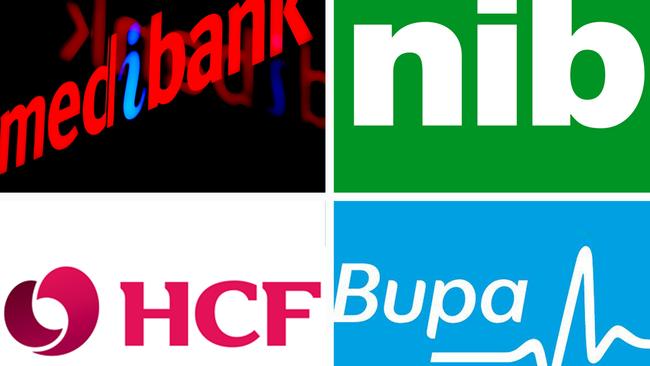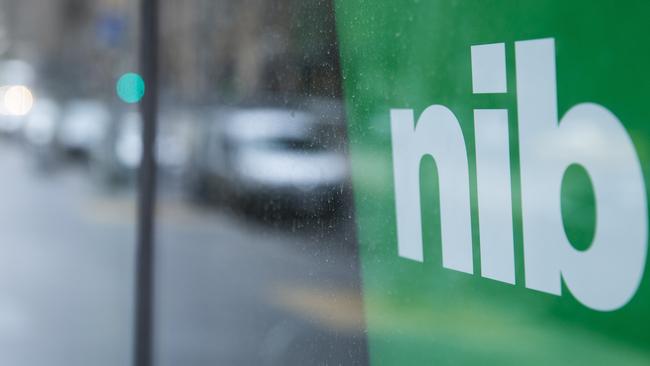Health fund profits double to $2.2bn, as biggest fund prepare to raise premiums
The latest data on private health providers shows the huge profits being pocketed, as cover premiums are set to surge for some Aussies. See what it means for you.
Health
Don't miss out on the headlines from Health. Followed categories will be added to My News.
Health fund profits have more than doubled to $2.2 billion just as three of the biggest funds prepare to raise their Gold cover premiums by up to 8 per cent.
The latest official data on health insurers performance shows their gross margin – their premium income minus their claims payout – surged from 16.9 per cent last financial year to 17.6 per cent this year.
The funds pocketed $4.9 billion because the amount they paid out in claims was lower than the premium revenue they got from their members, the data released by the Australian Prudential Regulation Authority shows.
In addition, their investment income improved from losses of $292.5 million last financial year to a profit of $702.4 million in the year ending June 30.
In total their net profit after tax rose from $1 billion last year to $2.2 billion this year, a 109 per cent improvement.

The profits come as funds benefitted from a period of making lower payouts to their members as a result of Covid surgery bans.
Their members continued to face difficulties accessing procedures in private hospitals in the wake of the pandemic because of staff shortages and disruption due to doctors and nurses needing to isolate when they caught Covid.
The latest data shows the number of hospital services began to rise sharply from March this year while claims for ancillary services like dental visits and eye care began to decline as interest rate rises began to bite.
Health funds promised they would not profit from the pandemic and many have made cashbacks to their members and delayed their premium rises to compensate people.
However, it is hard to measure exactly whether this has fully compensated health fund members.

The number of Australians with private health insurance continued to grow to 45.1 per cent of the population and almost twelve million people have hospital cover.
Health fund lobby group Private Healthcare Australia said “since the start of the pandemic $3 billion has been returned to members to compensate for services that were reduced or unavailable as a consequence of the lockdowns”.
It claims overpricing of medical devices like hip and knee replacements is behind higher premium costs.
“The government sets the price for generic medical devices which are 30-100 per cent higher than in international markets,” PHA boss Dr Rachel David said.
“It is absolutely unacceptable that Australians are being forced to pay so much more for medical devices than just about any other country in the world.”
The latest APRA data reveals in the 12 months to June 2023, health funds paid a record $2.292 billion for medical device benefits – an increase of 5.6 per cent on the previous year – and funded a record high 3.46 million items, she said.
An analysis of APRA data over the past four years shows a surge in the volume of claims for medical devices is putting pressure on premiums. During that period the number of devices funded grew by 11.6 per cent, she said.
‘BLACK HOLE’: DOCTORS CALL FOR PRIVATE HEALTH AUTHORITY
Exclusive: Australia’s doctors are demanding an independent authority to police private health insurers as funds move to lift their Gold cover premiums by up to 8 per cent.
“There is currently a policy reform black hole in the private health sector, leading to a system that doesn’t properly balance the needs of hospitals, medical device manufacturers, doctors, insurers, and most important of all – patients,” Australian Medical Association president Professor Steve Robson said.
“Private health policy has been on the ‘set and forget’ mode for some time now, meaning the system is falling behind changing customer needs and demographics,” Professor Robson said.
Earlier this week News Corp revealed three of the big four funds would raise the premiums on the Gold products by 6-8 per cent, more than twice the 2.9 per cent “average” rise announced by the government.
The health insurers own lobby group has conceded that with a price tag of up to $8600 in some states, Gold cover is now all but unaffordable and even they are calling on the government to reform the system.

The AMA wants private health insurance coverage extended to out of hospital care, as well as legislation to require all providers to return 90 per cent of premium dollars paid each year back to the consumer.
“Patients rightfully have an expectation to receive real value from their private health insurance policies, and the AMA believes the government should mandate a minimum amount that every insurer is required to return to patient care in the form of claims benefits,” Professor Robson said.
“If we truly want reform, including better models of care and private health insurance that is affordable amid Australia’s cost-of-living crisis, we need to come together as an industry – with government – to make that change. A Private Health System Authority can be the mechanism to make that happen,” he said.
It comes as millions of Australians are caught in an expensive postcode lottery paying over $2000 more per year for health cover than they would if they lived in another state.
PRIVATE HEALTH COVER PREMIUMS: WHERE AUSSIES PAY MORE
A News Corp investigation has found Victorians and Queenslanders pay among the highest Gold cover premiums in the country.
South Australia has the cheapest health insurance premiums in the country.
When premium rises take effect in the coming months nib members who live in Victoria will be paying $2,044 year more for Gold cover than members of the same fund who reside in South Australia.
If you live in NSW nib health insurance is $737 cheaper than in Victoria, Medibank cover is $663 cheaper, Bupa cover is $612 cheaper and HCF cover is $787 cheaper than in Victoria.
If you live in Queensland you’ll pay $1,704 more for nib Gold cover than if you lived in South Australia, Bupa Gold cover will cost you $588 more than in NSW and Medibank $574 more than in NSW.
The reasons for this are varied and complex and in part involve the way insurers spread the risk of high cost claims among funds to prevent one super high cost claim unfairly driving up the premiums for members in a single health fund.
These risk equalisation pools are organised on a state basis so higher claims in one state could help drive up premiums in that location Private Healthcare Australia’s analyst Ben Harris explains.

Another reason health fund premiums in Queensland and Victoria are higher is their residents are more likely to have low value surgeries like repeat colonoscopies and gastroscopies using their private cover.
Queensland has the highest rate of repeat colonoscopies in the country. For every 100,000 people in Queensland there are 596 repeat colonoscopies, in Victoria it is 562 but in NSW it is just 517, the Australian Atlas of Healthcare Variation shows.
Repeat gastroscopies are done at the rate of 353 per 100,000 population in Queensland, 340 in Victoria but just 321 in and only 264 in South Australia, the atlas reveals.
Victoria also has some of the highest rates of ear surgery to insert grommets that drain the ear canal.
Mr Harris said demographics also played a role – for example people living in Victoria and Tasmania are older which means they are more likely to use their cover and this will drive up premiums.
Victorians are also more likely to use private hospitals when they use their cover than health fund members in other states, he said.

Another factor is that some states include fees for an ambulance levy in private health insurance.
“Our health system is not consistent across the country, be it access to Medicare, public hospital systems, private hospitals or doctors. Private health insurance has different gaps to fill, which can lead to different premiums across the country,” said Mr Harris the director of policy and research at Private Healthcare Australia.
“Doctors and hospitals vary across the country in how much care they provide. In some cases, there may be overservicing, which costs everyone in that state more,” he said.
“Health funds will pay doctors different rebates in different states to make sure customers have access to services,” he said.
The Australian Medical Association has revealed how health funds pay different rebates for the same surgery I different state.
In its 2020 Report card on private health insurance it showed Bupa paid $347 more for a knee replacement in Victoria than it does for the same procedure in NSW/ACT, Queensland, Western Australia and Tasmania.
It pays $264 more for the delivery of a baby in NSW than it does in Tasmania.
News Corp has previously revealed medical gap fees faced by health fund members also vary by state suggesting it could be cheaper for patients to hop on a plane and travel interstate for their surgery.
But this could also be driving up the cost of premiums.
In its 2020 report card the AMA showed that Bupa members are more likely to face gap fees in NSW (10.4 per cent have a gap) than Victoria (6.7 per cent have a gap) and South Australia (4.7 per cent have a gap).
Medibank members in the ACT are more likely to face a gap fee (16.8 per cent) than Victorians (7.1 per cent).
More Coverage
Originally published as Health fund profits double to $2.2bn, as biggest fund prepare to raise premiums





